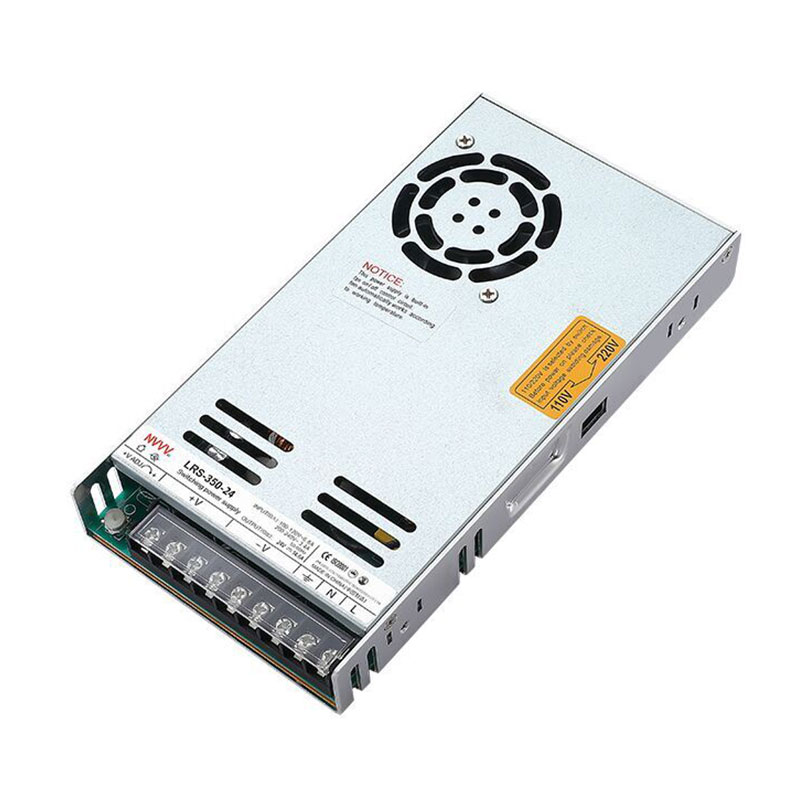Why is SMPS So Important?
This article explains the operation and importance of Switch Mode Power Supplies (SMPS). It details how SMPS work through high-frequency switching to efficiently convert electrical power, differentiates SMPS from Uninterruptible Power Supplies (UPS), and highlights the crucial role of SMPS in modern electronics due to their high efficiency, compact size, and versatility. Additionally, it outlines the steps to safely switch on an SMPS and describes the control mechanisms that ensure stable and reliable power output.
How Does the SMPS Work?
A Switch Mode Power Supply (SMPS) operates by converting electrical power through high-frequency switching. The process can be broken down into several stages:
- Input Rectification and Filtering: The input AC voltage is rectified by diodes to produce a DC voltage. This unregulated DC voltage is then filtered using capacitors to reduce the ripple.
- High-Frequency Switching: The filtered DC voltage is then switched on and off at a high frequency using a switching transistor (such as a MOSFET). This high-frequency AC signal is easier to transform and regulate.
- Transformer Stage: The high-frequency AC signal is fed into a transformer, which steps up or steps down the voltage as required by the load. The transformer also provides galvanic isolation between the input and output.
- Output Rectification and Filtering: The transformed AC voltage is rectified back to DC using diodes. Capacitors and inductors are then used to filter the rectified voltage, producing a stable DC output.
- Regulation and Feedback: A feedback circuit monitors the output voltage and adjusts the switching duty cycle to maintain a constant output voltage, despite variations in load or input voltage.
The high-frequency operation allows SMPS to achieve high efficiency and compact size compared to traditional linear power supplies.
Is SMPS and UPS Same?
No, an SMPS (Switch Mode Power Supply) and a UPS (Uninterruptible Power Supply) are not the same, though they are both used in power management systems:
- SMPS: An SMPS is designed to convert electrical power efficiently from one form to another using high-frequency switching. It provides a stable output voltage for electronic devices and is commonly used in computers, telecommunications equipment, and other electronic devices.
- UPS: A UPS is a backup power system that provides emergency power to a load when the main power source fails. It contains a battery that supplies power during an outage, allowing for safe shutdown of connected equipment or continued operation for a limited time. UPS units often include surge protection and power conditioning features.
In summary, an SMPS focuses on efficient power conversion and regulation, while a UPS provides backup power and protection against power interruptions.
Why is SMPS So Important?
SMPS is crucial in modern electronics and power management due to several key reasons:
- High Efficiency: SMPS can achieve efficiency levels of 80-90% or higher, significantly reducing energy waste and heat generation compared to linear power supplies.
- Compact Size: The high-frequency operation of SMPS allows the use of smaller transformers and components, resulting in a more compact and lightweight design.
- Versatility: SMPS can handle a wide range of input voltages and provide multiple output voltages, making them suitable for various applications, from consumer electronics to industrial machinery.
- Cost-Effectiveness: The efficiency and reduced heat dissipation of SMPS can lead to lower cooling requirements and operational costs, especially in large-scale systems like data centers.
- Reliability: With proper design and filtering, SMPS can offer stable and reliable power supply, essential for the proper functioning of sensitive electronic equipment.
Overall, the advantages of SMPS make it an indispensable component in many modern electronic devices and systems.
How to Switch on SMPS?
Switching on an SMPS involves a few key steps:
- Ensure Proper Connections: Verify that the input and output connections are correctly made, following the manufacturer's guidelines. Ensure that all connections are secure and there are no short circuits.
- Check Input Voltage: Make sure the input voltage is within the specified range for the SMPS. Applying an incorrect input voltage can damage the unit.
- Power On the Input: Switch on the input power source. This could be plugging the SMPS into an AC outlet or connecting it to a DC power source, depending on the SMPS type.
- Enable the SMPS: Some SMPS units have an on/off switch or an enable pin that needs to be activated. Follow the manufacturer's instructions to enable the SMPS.
- Monitor the Output: Use a multimeter to check the output voltage and ensure it matches the expected values. This helps verify that the SMPS is functioning correctly and providing the desired output.
How Do You Control SMPS?
Controlling an SMPS involves regulating its output voltage and current to meet the requirements of the connected load. This is typically done through feedback and control mechanisms:
- Feedback Loop: An SMPS uses a feedback loop to monitor the output voltage. This loop continuously compares the actual output voltage to a reference voltage and adjusts the duty cycle of the switching transistor to maintain the desired output.
- Pulse Width Modulation (PWM): The most common method of control in SMPS is Pulse Width Modulation. By varying the duty cycle of the switching signal, the SMPS can regulate the amount of power delivered to the load.
- Control ICs: Specialized control integrated circuits (ICs) are often used to manage the feedback and regulation process. These ICs provide precise control over the switching operation, improving efficiency and stability.
- Protection Mechanisms: SMPS units include various protection features, such as overvoltage protection, overcurrent protection, and thermal shutdown. These mechanisms ensure safe operation and protect the SMPS and connected devices from damage.
- Remote Control: Some advanced SMPS models offer remote control capabilities, allowing users to adjust settings and monitor performance through a computer interface or network connection.
By employing these control methods, an SMPS can deliver stable and efficient power to a wide range of applications, ensuring reliable performance and longevity of electronic devices.








